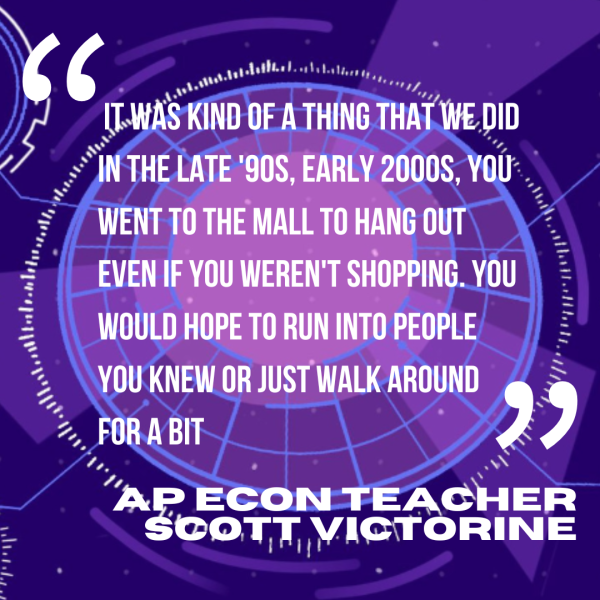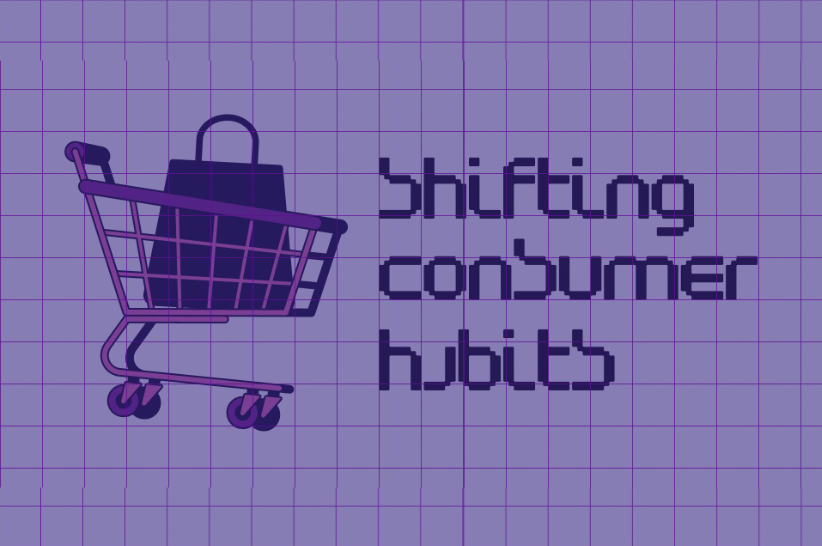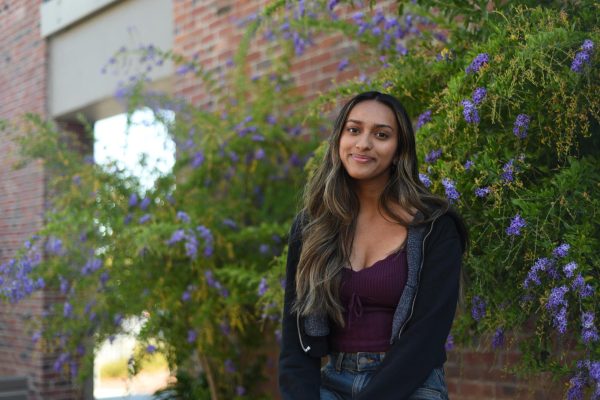Growing up in Sunnyvale, AP Macroeconomics teacher Scott Victorine would spend much of his time in malls, frequenting the Sunnyvale Town Center Mall with his family or visiting Vallco Shopping Mall with his friends during high school. Before the invention of phones and social media, teenagers needed a place to hang out and socialize, and for Victorine, the mall was a convenient spot.
“When I was in high school, It was kind of a thing that we did in the late ’90s, early 2000s,” Victorine said. “You went to the mall to hang out even if you weren’t shopping. You would hope to run into people you knew or just walk around for a bit, grab some food at the food court. Sometimes you did shopping, but a lot of times it was a place to hang out.”

But with the rise of social media and online forums, junior Anishka Khatwani feels the need for a physical place where people can meet and socialize has decreased. In fact, the amount of high school seniors who socialize out of school decreased from 44% in 2010 to 32% in 2022. Also, with more people like Victorine preferring online alternatives to shopping, malls have lost their popularity. Khatwani acknowledges the “death” of surrounding malls, such as Valco Park, and says there aren’t many substantial choices for in-person shopping besides Westfield Valley Fair mall.
Sophomore Nicole Jeleva resorts to online shopping when she’s too busy to go to Valley Fair and gains inspiration from trending makeup products and clothing on TikTok. While Jeleva believes the convenience factor has contributed to a rise in online shopping, she thinks shoppers will still prefer in-person shopping in the years to come.
“Malls might be dying but I don’t think they’re ever going to die,” Jeleva said. “Shopping in person is such a different experience and if you’re looking for something specific, the only way to look for them is in person. There’s more people going to Valleyfair mall, especially younger customers.”
Khatwani agrees that Valley Fair mall and its surrounding shopping center Santana Row have gained more customers since the COVID-19 pandemic ended. The rise in foot traffic can be attributed to the 1.1 billion dollar expansion the mall has been working on, with stores like Alo Yoga and Marugame Ramen recently opening.
Khatwani and Jeleva both believe the variety of small businesses and popular retail stores in Valleyfair mall can appeal to a range of customers. This includes junior clothing store Brandy Melville and makeup chain Sephora that attract younger crowds.
“Valleyfair is the main mall and social hub for teenagers living here,” Khatwani said. “Other ones like Westgate Mall died down because they have stores that just aren’t as popular anymore, like GAP and Old Navy. I think the aesthetic of Valleyfair is better in general because they have more options for food and entertainment, so it can really become a whole day trip. Other surrounding malls don’t have much to offer besides shopping.”

However, Khatwani notes that she has started to limit her shopping outings due to the rising prices of clothing and makeup products. For example, she stopped shopping at Garage, an on-trend clothing store located in Valleyfair, because she found the prices of clothes unjustifiable. Victorine explains that inflation has contributed to a decrease in stores.
“Places like Valleyfair tend to be a little more high end or upscale and most young people don’t have that kind of money or to be shopping at places like that,” Victorine said. “I know that there’s some stores in there that aren’t accessible, but I think that different malls lend themselves differently to those kinds of experiences.”
Victorine also believes that inflation forces adults to spend more on everyday essentials. Spending more income on things such as groceries and gasoline leaves less disposable income for people to spend at malls or online. However, Jeleva says the income for teenagers with jobs, like herself, is almost completely disposable. Even as prices increase, she justifies her purchases by allowing them to be gifts to herself as a form of self-care.
“A lot of times if I find myself having a tough week then I’ll treat myself to something just because I know I deserved it,” Jeleva said. “If I do well in school, or a certain test, or a project that I knew was hard, and I put a lot of effort into it, I’ll get something, that way I feel like I’m worthy of getting it.”
With shoppers like Khatwani and Jeleva who continue to shop at malls, Victorine believes overall shopping and consumerism will not falter. Even with the death of many malls, consumer spending remains a big part of the U.S. economy. According to the U.S. bank, personal consumer expenditures represented nearly 68% of the United States gross domestic product.
“If you look at the United States, from a macroeconomic perspective, if you look at our measure of economic growth, gross domestic product GDP, consumer spending represents the largest portion — 70% — of the United States economy,” Victorine said. “So in that regard, in an economic sense, it’s great that people go out and they buy things because it’s what drives the economy.”












